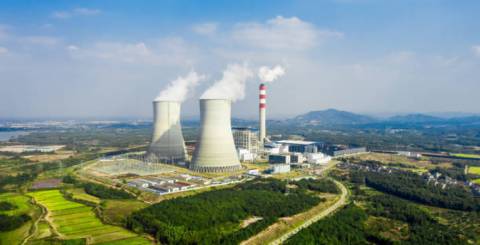5 Ways Nuclear Inspection Cameras Are Revolutionizing Industry Inspections

Industries that deal with nuclear energy must be cautious. They need to inspect their equipment often to prevent accidents. Traditional inspection methods can be slow and risky for workers. That’s why nuclear inspection cameras are becoming popular. But how are these cameras changing the way inspections are done?
Nuclear inspection cameras allow workers to view inside reactors and other hazardous sites without being there. They provide crisp images and videos, making it easier to spot faults. These cameras also keep workers at a safe distance, lowering their hazards.
5 ways as technology advances, nuclear inspection cameras are becoming increasingly crucial for safety and efficiency. With the support of energy software development, these cameras now leverage AI-driven analytics, real-time monitoring, and automated reporting to enhance precision and reliability. This post will explore five ways they are transforming the industry.
1. Improving Safety for Workers
Radiation levels at nuclear power plants and other facilities are high, and inspectors face major health risks. Traditional inspections force individuals to approach reactors and machinery, exposing them to dangerous radiation. Nuclear Inspection Camera, however, help to lower this risk.
These cameras can resist quite hostile environments. They can be placed in high-radiation zones without endangering human life. From a safe distance, workers may manage them to lower their radiation level, making inspections far safer for staff members.
Apart from safeguarding employees, these cameras help businesses adhere to rigorous safety regulations. Many governments and companies have policies meant to restrict radiation exposure. Nuclear inspection cameras help companies follow safety regulations, which ensures a safer workplace and helps avoid legal problems.
By deploying these smart cameras, industries can ensure worker safety while conducting thorough inspections.
2. Enhancing Inspection Accuracy
Finding minor flaws or cracks in nuclear equipment is crucial. If not seen early on, a slight issue can become a major catastrophe. Traditional inspections rely on human eyesight, and occasionally, minor problems are missed. Nuclear inspection cameras, with their high-quality photos and movies, help tackle this issue.
These cameras record clear details using sophisticated technology. Several types have infrared sensors and zoom capabilities, which allow inspectors to view minute cracks or weak areas that might not be obvious to the unaided eye. Early identification of problems helps businesses resolve them before they become major.
The cameras’ ability to record the inspection process adds yet another benefit. Thus, employees can verify any missed elements by subsequently viewing the film. Recordable inspections also support future planning and maintenance. Engineers can monitor changes over time by using past and present videos.
Nuclear inspection cameras improve the accuracy of nuclear inspections, enabling industries to keep their equipment in good condition. They also enhance the general safety of nuclear plants and help avoid expensive repairs. Thus, they are useful instruments for contemporary inspections.
3. Reducing Inspection Time
Traditional inspections are quite time-consuming. Employees must follow rigorous safety guidelines, gently traverse hazardous locations, and don protective gear. These actions slow down the inspection procedure. While still guaranteeing safety, nuclear inspection cameras enable the acceleration of this process.
These cameras help employees avoid entering high-risk zones. They can be placed in different locations and controlled remotely. Moreover, specific tools or staff training for radiation exposure are unnecessary, saving time and allowing for faster inspections.
Certain nuclear inspection cameras also include automated features. They can move independently, rapidly scan places, and relay real-time footage to authorities, cutting inspection time even further. This is quite beneficial in sectors where time is of the essence, including nuclear power plants.
4. Lowering Maintenance Costs
Regular inspections enable industries to avoid significant equipment breakdowns. Still, traditional inspection methods can be expensive. Businesses must pay for workers’ protective gear, specialized tools, and training courses. An excessively long inspection also influences production. Nuclear inspection cameras help lower these expenses.
These cameras allow one to examine difficult-to-reach regions, eliminating the need for hand inspections of equipment. This conserves money and time. Businesses must not stop running for extended periods only to check machinery. Inspections can be done more often without compromising output.
Another way these cameras cut expenses is by avoiding significant damage. Early problem identification allows fixes before the total equipment breakdown, which is always less expensive than replacing an entire system. Thus, early identification of issues helps businesses prevent costly breakdowns.
5. Expanding Inspection Capabilities
Several areas within nuclear plants are unsafe or impossible for humans to access. Manual examinations are challenging in high temperatures, radiation, and small areas. However, industries can check these places risk-free using nuclear inspection cameras.
These cameras can withstand very hostile environments. Some types can withstand radiation, pressure, and intense heat. To get thorough pictures, they can be positioned inside reactors, pipes, and other confined areas. This allows one to check once-thought-inaccessible locations.
Another outstanding quality is the capacity of these cameras to operate underwater. Many nuclear plants have cooling pools and water-filled reactors. While regular cameras would not operate in these circumstances, nuclear inspection cameras are made for underwater operation, which increases their inspection powers even further.
These advanced capabilities let businesses conduct more exhaustive checks. They no longer have to conjecture what is happening within potentially hazardous machinery. Instead, they can receive clear images and make wise judgments, resulting in better safety and maintenance at nuclear facilities.
Conclusion
Nuclear inspection cameras are transforming industry inspection performance. They shorten inspection times, increase accuracy, and increase worker safety. They also expand the capacity to check hazardous regions and help cut expenses. These advantages make nuclear inspection cameras useful for industries depending on nuclear energy.
As technology develops, these cameras will become even more advanced. They will enable industries to keep workers safe and identify issues sooner. Any business striving to increase efficiency and safety should invest in nuclear inspection cameras.
Similar Articles
Discover how niche hobby communities thrive online, connecting enthusiasts through platforms like Reddit and Discord. Explore shared passions & resources today!
The current business environment and the mind boggling pace at which continues to evolve has been for everyone to see. But what many may not realise is that this change has made effective communication with potential customers more important than ever.
In today's digital content landscape, creators are constantly seeking ways to make their productions more engaging, relatable, and authentic.
With the advancement of technology, goods are now being produced at an enormous rate and in diverse regions throughout the globe, which has transformed industries.
Discover how industrial printer ink differs from regular ink—durability, high-volume performance, and cost-efficiency for B2B printing needs.
Atomic Absorption Spectroscopy (AAS) is applied in fields like healthcare, food safety, and pharmaceuticals.
Modern businesses have come to rely on technological infrastructure, and quite heavily at that, no? Everyone can see the growing dependence of all industries on digital solutions to go about their operations. However, the complexity of modern business is beginning to necessitate the kind of technological solutions that can scale with changing requirements
Digital technologies and the transformation they have brought about have fundamentally altered how businesses operate. This has resulted in an increase in data generation and the adoption of various software, among other things
Users today are pickier than ever. They want their needs met with a few clicks or taps on the screen. Failure to meet their needs results in site abandonment, which is not a positive sign for a business aiming to be successful. The traditional way of information sharing through websites requires a reload for every action a user performs.









